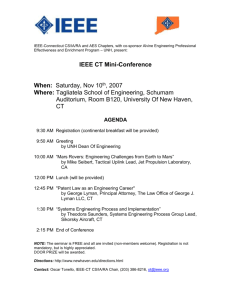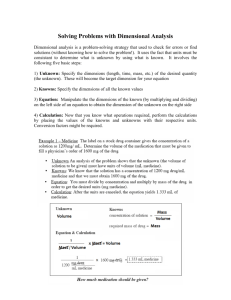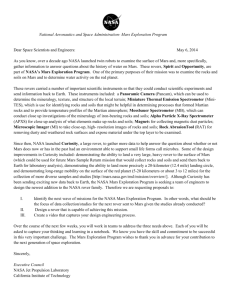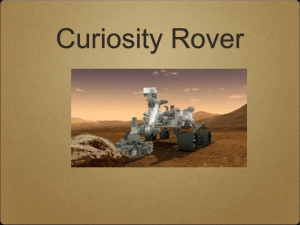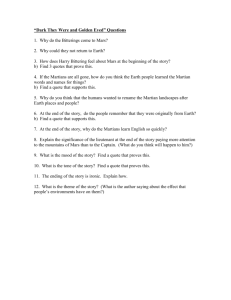NASA deep UV laser selection for Mars 2020 Rover from IEEE
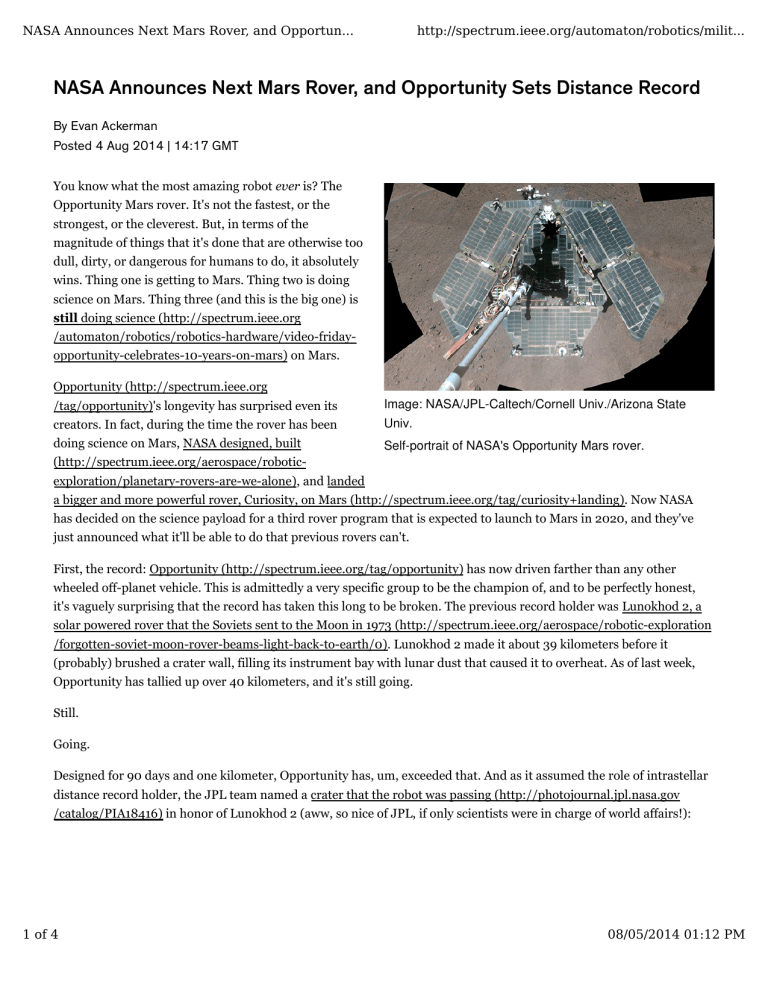
NASA Announces Next Mars Rover, and Opportun...
http://spectrum.ieee.org/automaton/robotics/milit...
NASA Announces Next Mars Rover, and Opportunity Sets Distance Record
By Evan Ackerman
Posted 4 Aug 2014 | 14:17 GMT
You know what the most amazing robot ever is? The
Opportunity Mars rover. It's not the fastest, or the strongest, or the cleverest. But, in terms of the magnitude of things that it's done that are otherwise too dull, dirty, or dangerous for humans to do, it absolutely wins. Thing one is getting to Mars. Thing two is doing science on Mars. Thing three (and this is the big one) is still doing science (http://spectrum.ieee.org
/automaton/robotics/robotics-hardware/video-fridayopportunity-celebrates-10-years-on-mars) on Mars.
Opportunity (http://spectrum.ieee.org
/tag/opportunity) 's longevity has surprised even its creators. In fact, during the time the rover has been
Image: NASA/JPL-Caltech/Cornell Univ./Arizona State
Univ.
doing science on Mars, NASA designed, built
(http://spectrum.ieee.org/aerospace/robotic-
Self-portrait of NASA's Opportunity Mars rover.
exploration/planetary-rovers-are-we-alone) , and landed a bigger and more powerful rover, Curiosity, on Mars (http://spectrum.ieee.org/tag/curiosity+landing) . Now NASA has decided on the science payload for a third rover program that is expected to launch to Mars in 2020, and they've just announced what it'll be able to do that previous rovers can't.
First, the record: Opportunity (http://spectrum.ieee.org/tag/opportunity) has now driven farther than any other wheeled off-planet vehicle. This is admittedly a very specific group to be the champion of, and to be perfectly honest, it's vaguely surprising that the record has taken this long to be broken. The previous record holder was Lunokhod 2, a solar powered rover that the Soviets sent to the Moon in 1973 (http://spectrum.ieee.org/aerospace/robotic-exploration
/forgotten-soviet-moon-rover-beams-light-back-to-earth/0) . Lunokhod 2 made it about 39 kilometers before it
(probably) brushed a crater wall, filling its instrument bay with lunar dust that caused it to overheat. As of last week,
Opportunity has tallied up over 40 kilometers, and it's still going.
Still.
Going.
Designed for 90 days and one kilometer, Opportunity has, um, exceeded that. And as it assumed the role of intrastellar distance record holder, the JPL team named a crater that the robot was passing (http://photojournal.jpl.nasa.gov
/catalog/PIA18416) in honor of Lunokhod 2 (aww, so nice of JPL, if only scientists were in charge of world affairs!):
1 of 4 08/05/2014 01:12 PM
NASA Announces Next Mars Rover, and Opportun...
http://spectrum.ieee.org/automaton/robotics/milit...
(http://photojournal.jpl.nasa.gov/jpeg/PIA18416.jpg)
Image: NASA/JPL-Caltech/Cornell/Arizona State Univ.
2 of 4
Cute!
So that's now, but let's talk about the future. About a year ago, we got a peek at what NASA had in mind for the as-yet unnamed Mars 2020 rover (http://spectrum.ieee.org/automaton/robotics/industrial-robots/nasa-flaunts-designfor-2020-mars-rover) , which I apparently took to calling M2020. M2020 will feature a rock and soil sample collector, and eventually, somehow, those rock and soil samples may make their way back to Earth.
The new and exciting stuff is the science payload, which is going to be significantly different from what Curiosity is carrying (http://spectrum.ieee.org/aerospace/robotic-exploration/planetary-rovers-are-we-alone) :
Mastcam-Z, an advanced camera system with panoramic and stereoscopic imaging capability with the ability to zoom. The instrument also will determine mineralogy of the Martian surface and assist with rover operations.
SuperCam, an instrument that can provide imaging, chemical composition analysis, and mineralogy. The instrument will also be able to detect the presence of organic compounds in rocks and regolith from a distance.
Planetary Instrument for X-ray Lithochemistry (PIXL), an X-ray fluorescence spectrometer
08/05/2014 01:12 PM
NASA Announces Next Mars Rover, and Opportun...
http://spectrum.ieee.org/automaton/robotics/milit...
that will also contain an imager with high resolution to determine the fine scale elemental composition of Martian surface materials. PIXL will provide capabilities that permit more detailed detection and analysis of chemical elements than ever before.
Scanning Habitable Environments with Raman & Luminescence for Organics and Chemicals
(SHERLOC), a spectrometer that will provide fine-scale imaging and uses an ultraviolet (UV) laser to determine fine-scale mineralogy and detect organic compounds. SHERLOC will be the first UV Raman spectrometer to fly to the surface of Mars and will provide complementary measurements with other instruments in the payload.
The Mars Oxygen ISRU Experiment (MOXIE), an exploration technology investigation that will produce oxygen from Martian atmospheric carbon dioxide.
Mars Environmental Dynamics Analyzer (MEDA), a set of sensors that will provide measurements of temperature, wind speed and direction, pressure, relative humidity and dust size and shape.
The Radar Imager for Mars' Subsurface Exploration (RIMFAX), a ground-penetrating radar that will provide centimeter-scale resolution of the geologic structure of the subsurface.
There's significantly more focus here on detecting organic compounds, which will help the rover search for evidence of
Martian life, both past and present. The ground-penetrating radar should prove to be interesting, too.
What really caught our eye, though, is MOXIE, and not just because it reminds us of an absolutely horrible brand of soda that you can find in Maine (http://en.wikipedia.org/wiki/Moxie) and nowhere else. MOXIE is perhaps our very
3 of 4 08/05/2014 01:12 PM
NASA Announces Next Mars Rover, and Opportun...
http://spectrum.ieee.org/automaton/robotics/milit...
first tentative stab at seeing what it's going to take to keep humans alive on Mars. If it works, it'll create about 22 grams for rocket fuel, or combine it with hydrogen to make water. It's a staple for human colonization, and if this little test factory works well, follow-up missions will likely try and figure out what else we might be able to manufacture on Mars, including fuels like methane. The more stuff we can make on Mars itself, the less stuff we have to haul there, which saves money and time while being safer for future Martian explorers (http://spectrum.ieee.org/static/why-mars) .
The Mars 2020 mission is scheduled to land in 2021, but before that, the ExoMars rover (http://spectrum.ieee.org
/automaton/robotics/military-robots/nasas-mars-program-now-includes-2020-rover) (a collaboration between the
European Space Agency and Russia's Roscosmos) will land on Mars in 2018 or 2019 and start doing its own thing. It's starting to get very busy on Mars, and it's all thanks to these incredible robots.
Via [ NASA (http://www.nasa.gov/press/2014/july/nasa-announces-mars-2020-rover-payload-to-explore-the-redplanet-as-never-before/) ] and [ JPL (http://www.jpl.nasa.gov/news/news.php?release=2014-245) ]
4 of 4 08/05/2014 01:12 PM
